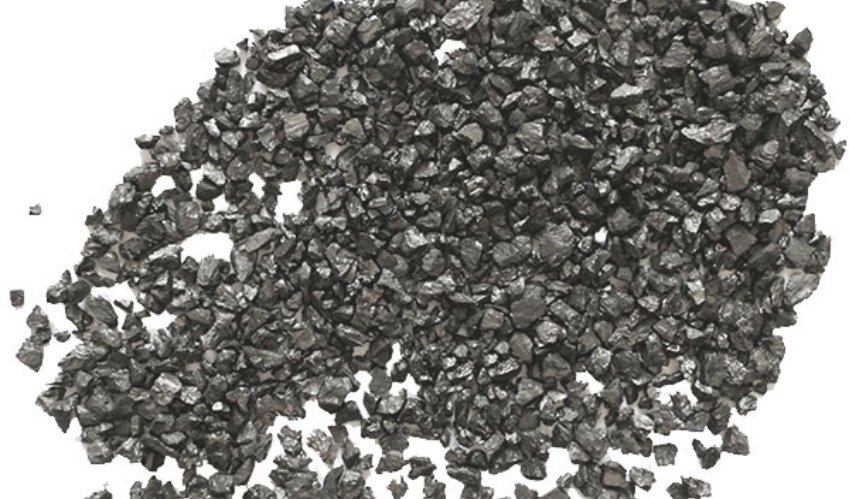The global pitch coke market reached a volume of nearly 7900.20 KMT in 2024, reflecting the consistent demand from end-use industries such as aluminium smelting, graphite electrode production, and steel manufacturing. Pitch coke, a carbon-rich material derived from coal tar pitch, is primarily used as a carbon additive and binder in high-temperature industrial processes. With its excellent thermal conductivity, mechanical strength, and purity, pitch coke plays an essential role in producing anodes and electrodes that are critical to various metallurgical applications.
The pitch coke market outlook remains stable, supported by the continued expansion of the aluminium and steel sectors, particularly in emerging economies. Increasing energy demand, rapid industrialisation, and infrastructure development projects are reinforcing the use of pitch coke in metal refining and processing. Additionally, the growing need for carbon-based materials in aerospace and advanced manufacturing is further adding to the market’s momentum. As industries move toward more efficient and environmentally friendly processes, pitch coke is expected to remain a key material due to its unique physical and chemical properties.
Pitch Coke Market Trends
One of the significant trends in the pitch coke market is the rising demand for ultra-high-purity carbon materials. As the aerospace, electronics, and battery sectors expand, the requirement for consistent, high-performance carbon inputs is becoming more crucial. Pitch coke, especially needle-grade and high-carbon-content variants, is increasingly sought after for applications that require precision and thermal resilience.
Another trend shaping the market is the shift toward low-sulphur pitch coke products. Environmental regulations are tightening worldwide, and manufacturers are under pressure to reduce emissions from coke production and use. This is prompting the development and preference for cleaner, low-sulphur alternatives that align with regulatory standards and sustainability goals.
In the aluminium industry, which is a major consumer of pitch coke, the push for lightweight vehicles and renewable energy solutions is increasing the demand for high-quality carbon anodes. This, in turn, supports a growing need for consistent pitch coke supplies. Moreover, as electric vehicles and energy storage systems become more prevalent, the graphite electrode sector—another key application for pitch coke—is witnessing steady growth.
There is also a trend of vertical integration among major industry players to secure a stable supply of raw materials and improve production efficiency. Companies are investing in upstream coal tar distillation and downstream anode manufacturing to ensure product quality and reduce dependency on external suppliers.
Request your complimentary sample report today – https://www.expertmarketresearch.com/reports/pitch-coke-market/requestsample
Technology and Advancement
Technological advancements in pitch coke manufacturing are playing a pivotal role in improving product quality, production efficiency, and environmental compliance. Innovations in coal tar pitch processing have led to better control over the pitch composition and impurity levels, resulting in higher-grade coke with consistent performance characteristics. This is especially important for applications in the production of graphite electrodes and specialty carbon products.
Enhanced calcination processes using rotary kilns, vertical shaft kilns, and advanced heat recovery systems are helping reduce energy consumption and emissions during pitch coke production. These systems ensure optimal carbonisation and material integrity while maintaining cost efficiency.
Research and development efforts are also focusing on modifying pitch coke structures at the molecular level to increase its density, electrical conductivity, and oxidation resistance. These improvements are beneficial for applications in high-tech industries such as semiconductors, aerospace composites, and lithium-ion batteries.
Automation and process control technologies are being integrated into production plants to monitor temperature, pressure, and chemical composition in real-time. These advancements help minimise operational risks and enhance output consistency, which is vital for meeting the high standards of end-use industries.
Pitch Coke Market Growth
The global pitch coke market is expected to grow at a compound annual growth rate (CAGR) of 1.70% during the forecast period from 2025 to 2034. This steady growth is driven by rising demand from the aluminium, steel, and graphite industries, which rely heavily on pitch coke for anode and electrode manufacturing.
As global construction and automotive industries expand, the need for high-strength metals is increasing, subsequently fuelling the requirement for metallurgical coke and carbon-based inputs. The aluminium smelting sector, in particular, remains a key growth driver due to the lightweighting trend in transportation and packaging.
In the graphite electrode segment, pitch coke continues to play a vital role as electric arc furnace (EAF) steel production gains popularity over traditional blast furnace methods. EAF production is more environmentally friendly and efficient, and as countries aim to reduce emissions, EAF usage is expected to increase, thereby supporting the demand for pitch coke.
Emerging economies in Asia Pacific, especially China and India, are experiencing a rise in industrial output and infrastructure development, contributing significantly to pitch coke consumption. Government-led investments in manufacturing and power generation sectors further strengthen the market’s growth trajectory in these regions.
Pitch Coke Market Forecast
By 2034, the global pitch coke market is projected to reach a volume of approximately 9350.78 KMT. This growth will be underpinned by the continued development of end-use sectors and the strategic efforts of manufacturers to enhance product quality and supply reliability. The demand for high-performance carbon materials is anticipated to increase, particularly in advanced manufacturing and energy storage technologies.
Asia Pacific is expected to remain the leading regional market due to its dominant role in global aluminium production, steel manufacturing, and battery technology development. China will continue to be a major consumer and producer of pitch coke, supported by its large-scale industrial base and investments in clean energy and electric mobility.
North America and Europe are also projected to contribute to market growth, driven by technological advancements, strong automotive industries, and regulatory support for sustainable manufacturing practices. These regions are likely to focus on premium-grade pitch coke variants for specialised applications.
Manufacturers are expected to expand production capacity, invest in clean technology, and forge partnerships with raw material suppliers and end-users to secure market share. Diversification into emerging applications such as carbon composites and energy storage systems will also help support long-term market expansion.
Challenges and Opportunities
The pitch coke market faces several challenges that could impact its growth trajectory. One of the key concerns is the volatility in raw material availability and pricing, particularly coal tar pitch, which is derived from metallurgical coke production. Fluctuations in steel industry output and changes in environmental regulations can affect the supply and pricing of coal tar derivatives, impacting pitch coke production.
Environmental pressures and regulatory scrutiny over emissions from pitch coke production also present challenges. Meeting stringent standards requires investment in pollution control technology and sustainable production methods, which may raise operational costs, especially for smaller manufacturers.
Despite these challenges, the market presents significant opportunities. The rising adoption of electric vehicles and energy storage systems is boosting demand for synthetic graphite and carbon-based materials, where pitch coke serves as a key precursor. Expanding applications in aerospace, defence, and electronics also offer growth avenues for high-grade pitch coke.
Opportunities also lie in developing low-emission and circular production technologies, which can position companies as leaders in sustainable carbon material supply. With continued focus on quality, innovation, and environmental responsibility, the pitch coke market is poised to evolve and grow steadily in the years ahead.












Leave a Reply